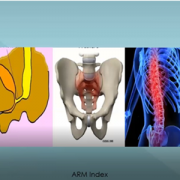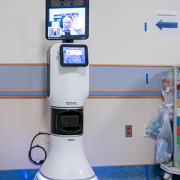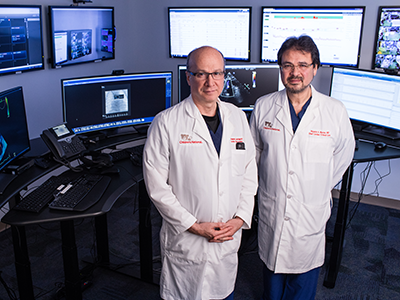Colorectal team presents virtual conference sessions
The 6th Annual Alex Pediatric Surgery Congress and 1st Nile of Hope Hospital Congress conference, in cooperation with Colorectal Team Overseas (CTO), provides updates in colorectal, urogenital disorders and pelvic reconstructions in pediatrics. The Children’s National Hospital colorectal team was due to present at the conference in Alexandria, Egypt, in April 2020, but due to the global COVID-19 pandemic the event was indefinitely postponed. Despite this, Marc Levitt, M.D., Colorectal and Pelvic Reconstructive Surgeon at Children’s National, and Founder and Head of the CTO, presented educational sessions virtually to Egyptian surgeons throughout the month of April.

Surgeons assemble in a virtual Zoom session for a case presentation on anorectal malformations by Marc Levitt, M.D., and the Children’s National colorectal team.
The video conferences allowed surgeons and experts to come together and foster the global collaboration that benefits colorectal teams and patients worldwide. The first session included 70 pediatric surgeons from Egypt and grew to over 128 attendees in the last session. The presentations spanned a variety of topics and can be accessed at the links below:
- Anorectal malformations and the challenges of soiling and continence (April 9, 2020)
- Case study: constipation and incontinence (April 16, 2020)
- Cloacal malformations (April 23, 2020)
Joining Dr. Levitt in the discussion were members of the Children’s National colorectal nursing team, including Julie Choueiki, Program Manager, Justine Garofalo, CPNP, Meghan Mesa, Tara Garbarino, CPNP, and Katherine Worst, CPNP-AC. The integrated Children’s National colorectal team elevates the significance of the nursing role in caring for complex patients. For example, cases in the Bowel Management Program require hours of ongoing nursing care. The team demonstrated the partnership that benefits children when surgeons include and value nursing presence in the care of colorectal patients.
Moving forward, the team will bring continued virtual, telehealth collaboration and education. Doing so will expand the potential for more colorectal patients to receive the care they need.






